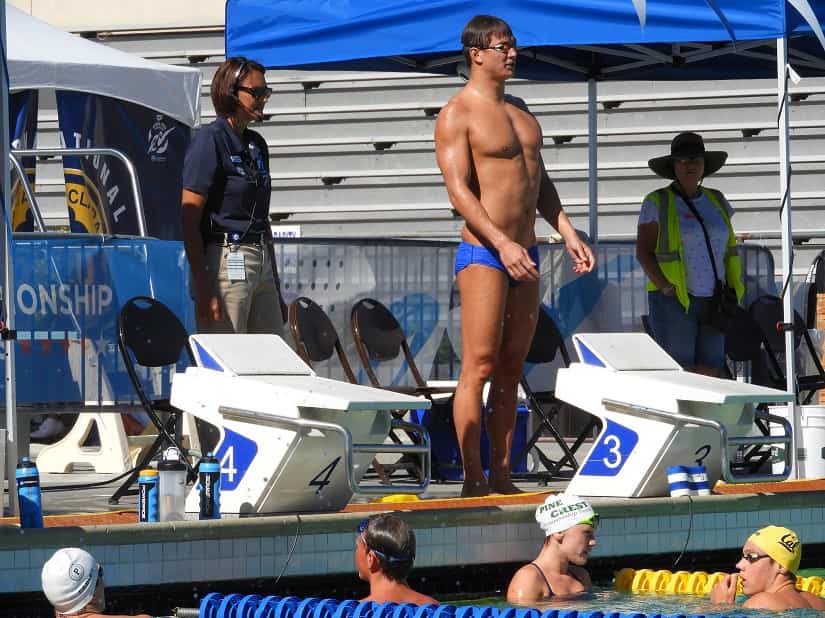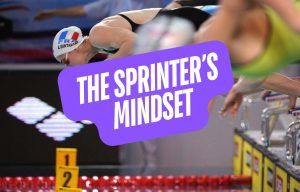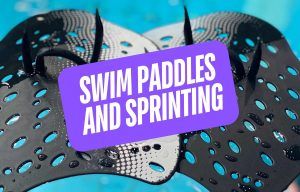You already know how important oxygen is to your muscles. (Right?) Learn how breathing better and stronger will help you increase your performance in the water.
Swimmers face a unique problem training and competing in the water—breathing. Unlike our land-dwelling athletic brothers and sisters, we’ve got our faces buried under the surface of the water for the majority of the time while we are swimming.
Whether it is timing our breaths into our flip turns so that we hit the wall at speed, or managing our bilateral breathing in practice so that we are helping ward off those pesky bouts of swimmer’s shoulder, our breathing plays a big role in how we end up swimming.
But that’s not what we are going to talk about.
Instead, I’m going to kick some chlorinated knowledge on how you can train and prime your breathing muscles so that you can deliver more oxygen to your muscles when you need it most.
The result of this?
More stamina and faster swimming in the water.
When it comes to how to swim faster, this one is as easy of a win as it gets.
Let’s do this.
Train Your Breathing for a Boost in Stamina
How much thought do you give to how conditioned your breathing muscles are?
Ever stopped to consider that you could train your breathing like you would the muscles in your arms that pull you through the water?
True dat.
The benefits of being able to improve oxygen delivery to your muscles is kind of hard to overstate. After all, if your respiratory system can replenish oxygen in your lungs and heart more efficiently, more oxygenated blood can get to where it needs to go, faster.
Researchers at the University of Portsmouth took a group of elite runners and had them perform 6-weeks of breathing exercises.1
The experimental group did 30 breaths at 50% maximal inspiratory mouth pressure twice daily (think of “mouth pressure” as resistance) using an inspiratory muscle training device. The control group did the same reps and sets, but at 15%.
In addition to having a group train their mouth-hole twice a day, the researchers had athletes perform a series of time trials immediately after doing 2×30 breaths at 40% mouth resistance to “warm-up” their inspiratory muscles.
And the results?
- Even without the daily training, and using just the breathing warm-up protocol, performance jolted upwards, with time to exhaustion increasing by 5-7%.
- The experimental group who performed the 6-weeks of breathing exercises did 12% better.
- The double-whammy group, those who did the training and used the breathing warm-up fared the best, increasing performance by a whopping 15%.
The researchers realized that improving the efficiency of the respiratory system meant being able to get more of that precious oxygen that our muscles crave when training.
As they note:
The body is designed so the muscles responsible for breathing and the heart will take priority for oxygenated blood over limb muscles, meaning the rest of the body – legs and arms – will be the first to ‘go’ causing premature fatigue.”
15% improvement for breathing?
Yes, please.
The Takeaway for Swimmers
We are always on the hunt for a way to crush our best times in the water.
From spending hilarious amounts of money on the latest racing suits to the countless hours during swim practice watching the tiles on the pool floor sail by below us.
As a result, it can be easy to forget that one of the most powerful things we can do in service of faster swimmers is to simply breathe better!
More Stuff Like This:
7 Things You Can Do Today for a Better Practice Tomorrow. Want to get ahead of tomorrow’s workout? Here are 7 simple things that you can do today to make sure tomorrow’s practice goes down like a cool glass of success.
What Does Your Recovery Routine Look Like? Get more from your swim practices and bounce back faster by putting post-workout recovery on auto-pilot. Here’s how to build a killer recovery routine one for yourself.












